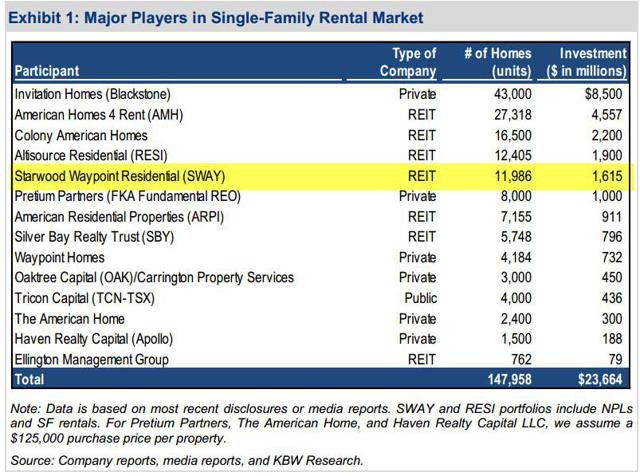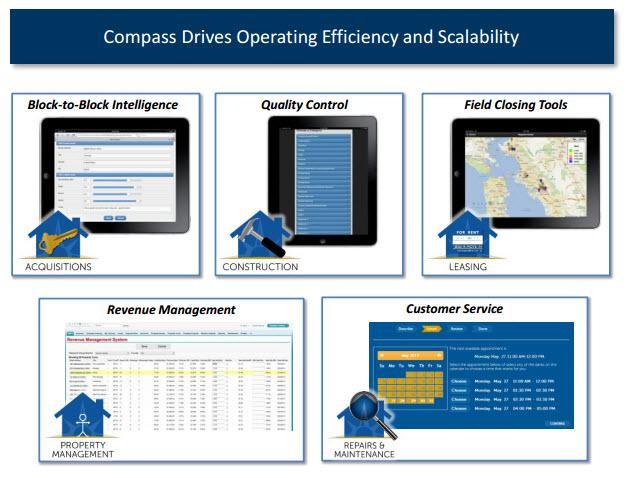There Is No New Paradigm In Mortgage REITDom Just Risk
Post on: 10 Июнь, 2015 No Comment

In a recent article, Build An Intelligent REIT Portfolio Without Mortgage REIT Risk . I explained the risks associated with mortgage REITs and the reason that I do not recommend the riskier REIT alternatives for most retirees or unsophisticated investors:
It is well known that mortgage REITs own debt, instead of property, and the risks of investing in mortgage REITs are considerably elevated, as compared with other dividend paying stocks. That is, mortgage REITs benefit when interest rates come down and that increases the value of the mortgages.
Essentially, it is the beneficial use of borrowing money that magnifies returns (leverage) and that is the reason that spreads for mortgage REITs are wider and dividends are much higher (than equity REITs). To put in bluntly, as I have often argued, MORTGAGE REITs DO NOT BELONG IN A RETIREMENT PORTFOLIO .
It’s clear that debt leverage in real estate is no different from leverage in other investments; the more debt you use, the greater potential for gain or loss. When we buy stocks on margin, we are simply leveraging investment returns with debt. Mortgage REITs and other assets carried on high margin involve substantial risk, since a small decline in the asset’s value will cause a much larger decline in principal.
But what happens when interest rates rise? Are there higher risks with REITs that have more debt leverage?
Equity REITs That Utilize Modest Leverage
The risks of leverage are well-known and investors should use caution when contemplating the highly-leveraged mortgage REIT investments. After all, the mortgage REIT returns can be tempting; however, the risks need to be understood. As I explained:
If you ever read a mortgage REIT article on Seeking Alpha, I hope it is this one. Remember, recognizing risk is absolutely essential to investing and don’t get carried away with the temptation for high returns and lose sight of the number one goal of PRINCIPAL PRESERVATION.
One way to control REIT risk is to move down the leverage curve and investigate the less dangerous Equity REITs. As we learned from the Great Recession, real estate prices can fluctuate and falling prices can wreak havoc on leveraged REIT owners. However, Equity REITs generally are less prone to volatility including the risks inherent with higher debt leverage.
So Where Can You Find the Most Durable Equity REITs Today?
In a recent Barron’s article (January 21, 2013), Chris Dieterich wrote :
Both US and foreign REITs are extremely sensitive to changes in interest rates. Global central banks follow the tune set by the Federal Reserve, which has signaled little intent to raise rates before 2015. By keeping rates low, the Federal Reserve minimizes the entire group’s operating costs. But what happens when the spigot of easy money gets shut off — or even when there’s a whiff of such occurrence in the air?
Dieterich makes a valid point. Shouldn’t investors consider the risks now? As Dieterich went on to explain:
Markets like Hong Kong — large holdings for non-US REIT funds — could be disproportionately hit by higher costs and a growing aversion to risk.
I sounded the horn over a year ago when I wrote an article (Weathering the Storms with a Fleet of Battleship REITs ):
While analyzing your investments and assessing risk tolerances, it is important to diversify your portfolio appropriately and determining whether your investment returns are effectively compensating for the associated risk. And this essential risk management element should entail intelligent bearing of risk for profit, the best test for which is a record of repeated success over a long period of time.
I went on to explain that:
in good times, REITs (and risk averse investors) have been content with the sustainability and peace of mind associated with prudent risk-management practices. In many of my Seeking Alpha articles I have written on Sleep Well at Night (SWAN Investing) REITs and I often compare this risk-managed model to prudent homeowners who carry insurance and feel good about having protection in place. even when there’s no fire.
I get frequent questions from investors asking for the best REITs — the ones that have the best returns and the lowest risk. Of course, my reply is usually something like find me a team with LeBron, Kobe, Shaq, Jordan, and Webber and I can tell you who will win the next NBA championship. There is simply no dream team and for investors there is simply no stock with zero risk.
However, there is one essential way that REIT investors can find the best insurance — or perhaps the best player to win the championship. There is a common thread here. The answer that can provide investors and NBA coaches with a sleep well at night all-star team
Survival of the Fittest
Wikipdeia defines durability as:
the ability to endure
The successful REIT or successful basketball team must have proven durability. Accordingly, the key to winning is to find a company (or a player) that can sustain over time and through constant change. How do companies (or players) stay in shape in order to provide great results?
That’s simple: Conditioning. That is, fine tuning and eliminating fat — or in REIT-dom we call it de-leveraging.

Although a modest amount of debt is not terribly dangerous, using too much is not prudent. The most risk-averse REITs have been able to utilize modest leverage when it doesn’t compromise the strength of their balance sheet. Essentially, a weak balance sheet (marred by excessive leverage) is simply like an unconditioned athlete and that’s why the strongest survive.
Balance Sheet strength can separate the men from the boys. The lists of 10 REITs below have conservative debt characteristics with none of them with leverage higher than 30% total debt to market cap. Remember that a debt/market cap ratio under 40 is considered conservative and these 10 REITs are considered highly durable examples.
Also, 9 of the 10 have investment grade debt ratings:
Half (5) of the group did not cut dividends and they also increased them every year. Upon review of the Drip Investing Resource Center. the following stalwart REITs have paid increased dividends in every year. That means they never cut or suspended dividends they simply maintained an exceptional track record of consistency and durability.
In closing, investors must be mindful of the level of leverage that REITs utilize. There is high correlation with low leverage and dividend consistency. In other words, a strong balance sheet and an intelligent dividend policy go hand in hand.
In The Little Book That Still Saves Your Assets . by David M. Darst, the author provides us with a powerful message and I will conclude my article with this quote followed by an illustration of a chart that tracks the history of interest rates for 10-year US Treasury notes, a leading benchmark for what other lenders charge.
One of the most important things to keep in mind is that trees really do not grow to the sky. At some point, all high-growth investments begin to slow and sometimes they crash to earth. Competition arises, demand eases off, and growth begins to decelerate. Keep in mind that it is not different this time. It never is. All trends, no matter how powerful, have an ending phase where the profit potential begins to fade. Phrases such as New Paradigm have wreaked incalculable financial damage on investors’ portfolios.
Remember. Principal Preservation is Rule Number One and be careful of interest rate risktick, tock, tick, tock.
Source: SNL Financial , DRiP Investing Resource Center
Disclosure: I have no positions in any stocks mentioned, and no plans to initiate any positions within the next 72 hours. I wrote this article myself, and it expresses my own opinions. I am not receiving compensation for it (other than from Seeking Alpha). I have no business relationship with any company whose stock is mentioned in this article.














